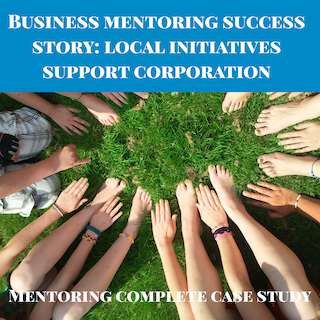

Thanks to things like Skype, webinars, and work-from-home initiatives, many organizations can enjoy employing the people they want instead of simply the people who are available to them in the organization’s area.
Of course, when an organization is spread out over multiple locations, the challenge is making sure that all of its people have a way of connecting to the big picture and understanding the organization’s vision, brand, identity, and rules — both written and unwritten. This is sometimes easier to manage when everyone is under the same roof but not so much in today’s world where people are often spread out in different offices, countries, and, sometimes, continents.
That’s where mentoring comes in. One of the best ways to help develop junior talent and provide road maps on how to navigate an organization and one’s career is through a formal mentoring program where upper-level and experienced talent nurtures the junior talent. That said, keep this in mind: the goal of mentoring isn’t to create clones, but rather to allow people to blossom and realize all that they can be while staying true to the organization’s vision and objectives.
Customer Success Story: LISC
The challenge described above was something Local Initiatives Support Corporation (LISC) faced a couple of years ago. Founded in 1979 and headquartered in New York City, LISC is a national nonprofit that works with communities to do comprehensive community development. Pearl M. Jones is LISC’s Diversity and Inclusion Director, and we sat down with her recently to talk about her organization’s mentoring initiatives.LISC has been working with Mentoring Complete and using Mentoring Complete since 2009.
So how did LISC come to mentoring? Pearl says that mentoring was something that had been under discussion for a while, but that there were three driving forces behind the adoption of a formal program:
Geography
Leadership development
Diversity
Why Mentoring? Why Mentoring Complete?
Pearl recalls, “I think probably what made it real and happen in 2009 is that we noticed that in the first year or so of people’s employment [with LISC], they may have had some difficulty in understanding what it is we do and how we do it, particularly because we’re spread out over the country.”
She says that she and her colleagues also saw mentoring as an opportunity to develop talent within and help them on their career development trajectory. Finally, there was the diversity and inclusion factor. “We thought it would be a way to open communication up and down the organization while giving people from different backgrounds and locations an opportunity to know one another while developing themselves personally and professionally,” she adds.
One of the main reasons LISC chose us as its vendor is because Mentoring Complete not only provides mentoring software to help manage the program, but also employs a “hands on” approach in developing and implementing the program. Pearl says, “I had done some looking online, and at the time, it was really difficult to find a lot of vendors that would actually help run a program internally and come in and do some training. Rene Petrin helped us get the program up and running, and he also worked with us as we needed to move the program along.”
Mentoring Program Software — How It Helps
Regarding Mentoring Complete, Pearl says that she wanted a way to manage the program without necessarily having to intrude on the individual mentoring relationships. To this end, she uses the checkpoint forms in Mentoring Complete. She notes, “It’s a good way for me to be able to — at a glance — see how people are doing and what they’re doing. This way, I can make interventions proactively, if necessary.”
She also likes the matching component in Mentoring Complete as well. “We’re not pairing people arbitrarily. The system is matching based on interests and best matches. The feedback I get most often is that the matches have been great, but really it’s the system that has done it, even though I get the credit!”
Results: Confident, Happier, “More Connected” Employees
LISC’s pilot program had ten pairs, and the program launched in the spring of 2009. The most recent program just finished up with 14 pairs. The third program is slated to start soon and should have around 15 pairs.
As for specific results and feedback, Pearl says both have been overwhelmingly positive. Program participants have reported an increased sense of confidence in how they manage and navigate the workplace, and participants have noted an increase in the number of goals set and met — both personally and professionally. At least one mentor and four mentees have enjoyed promotions. Pearl says, “While it may be difficult to attribute these promotions directly to the mentoring program, it does seem these things have come about as people were participating.”
The feedback that surprised her the most, however, is the percentage of participants who have actually said that they want to continue the relationship informally after the formal program is over.
And what advice would Pearl offer other organizations as they’re considering programs and vendors? Pearl says it’s important to question how “hands on” the vendor is going to be in helping to set up the program. She adds, “Having someone who is available to do some on-site facilitation is really important. And think really carefully about what the goals are.”
We couldn’t agree more, Pearl.
Are you thinking of starting a formal program in your organization? Or would you like an objective review of your current program? Either way, contact us and let’s get started.
